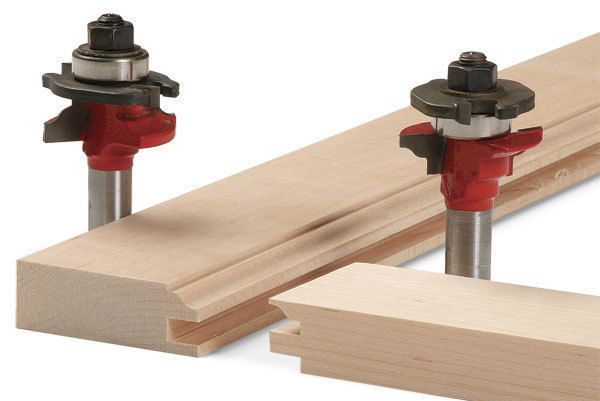Frame-and-Panel Doors Made Easy
Cope-and-stick router bits are quick but tricky. Here's how to get perfect results
Synopsis: Faced with the task of making 31 cabinet doors, art director Michael Pekovich turned to cope-and-stick router bits. These matching bit combinations create a frame-and-panel door that is just as strong as a traditional mortise and tenon, in a fraction of the time. The key to success is to use a flat panel of plywood or MDF that’s glued in place, not a raised panel that’s designed to float. Pekovich takes readers through the process of creating a door with cope-and-stick bits, from routing the edge profiles, to cutting the stiles and rails, coping the rails, and assembling the panels. He also discusses the different types of bits available and the best uses for each.
This past summer, during the remodeling of my kitchen, I was faced with the task of making 31 cabinet doors. I needed speed and simplicity, so I broke out my router table and a set of cope-andstick router bits. These bit combinations allow you to rout door frames quickly, in two steps. The first bit routs a profile and panel groove on the inside edge of all the frame parts. The second bit is a mirror image of the first, routing a coped profile and a stub tenon on the ends of the frame rails.
What you create is not a traditional mortise-andtenon joint. But done right, it gives you a cabinet door that’s just as strong. The key is to use a flat panel of plywood or medium-density fiberboard (MDF) that’s glued in place— not a raised panel, which is designed to float. All in all, I was able to build all 31 doors in the course of a weekend, from milling lumber to finish sanding.
Different types of cope-and-stick bits are available, with an array of profiles from simple thumbnails to more ornate ogees In general, these bits are designed for 3⁄4-in.-thick doors, but there are cope-and-stick bits available for stock 1⁄2 in. or thinner.
Start with straight, square stock
I began by milling the door-frame stock. I prefer quartersawn or rift-sawn boards because the tight, straight grain is both good-looking and stable. It’s important that the stock be straight and square. Any slight bow or twist will make fitting the door a nightmare.
Don’t be tempted to flatten an entire wide board and then rip the frame parts from it; that will lead to bowed or twisted stock. Instead, start with rough-sawn 4/4 stock and rip the parts oversize on the bandsaw. Crosscut the stock to remove any serious twist, bowing, or knots, but keep it as long as possible to reduce the number of pieces you’ll have to rout. Then joint and plane the boards to final thickness (mine finished at 3⁄4 in.), and rip to the exact width on the tablesaw.
Download a free copy of this article from issue #193 of Fine Woodworking magazine.
For the full article, download the PDF below:
Fine Woodworking Recommended Products

Starrett 12-in. combination square

Festool DF 500 Q-Set Domino Joiner

Estwing Dead-Blow Mallet






















Log in or create an account to post a comment.
Sign up Log in